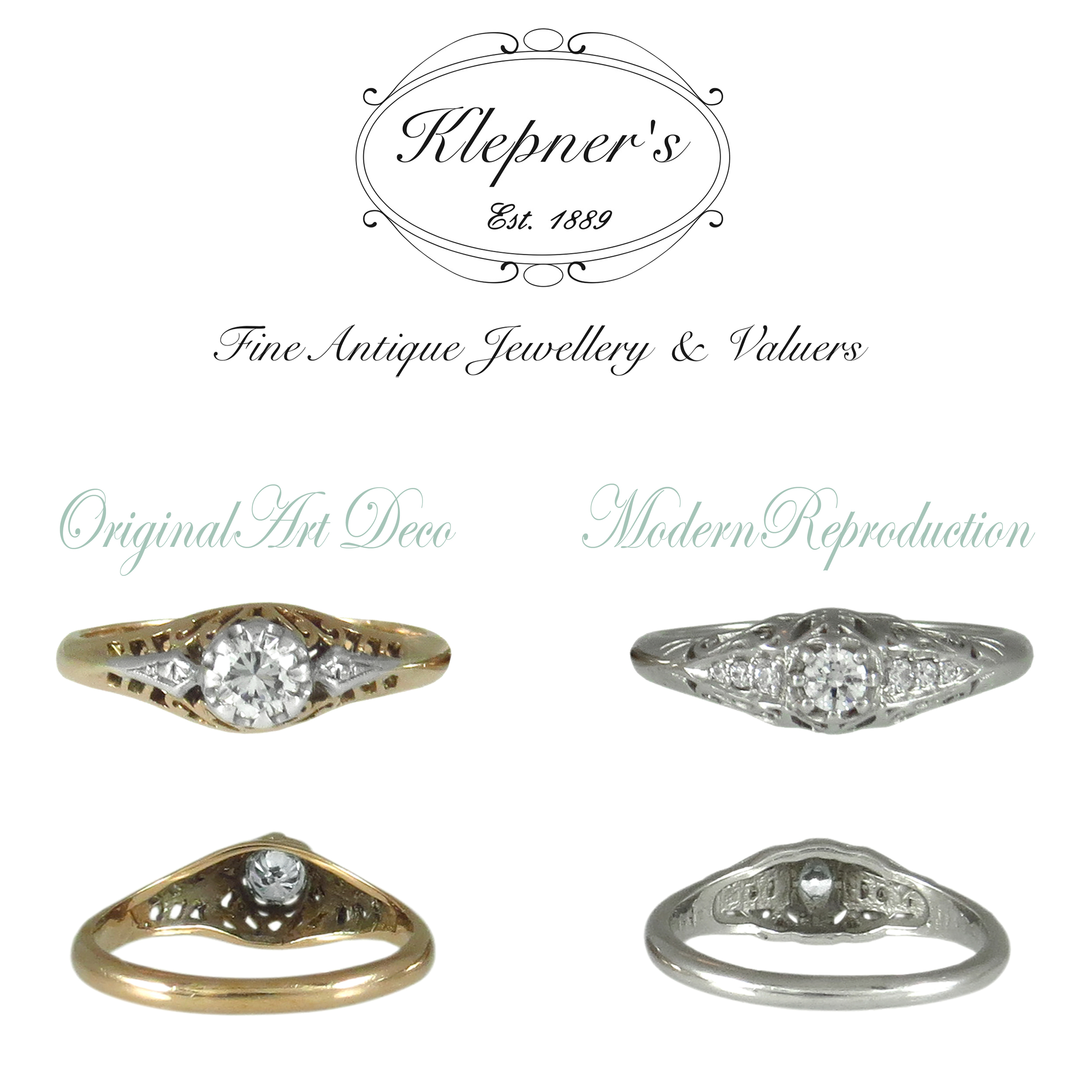1. The Craftsmanship: Most reproduction rings are castings, meaning that a mold has been taken from an original ring, with a modern copy then produced using a casting process. Once a casting is made, it needs to be “cleaned up” by a jeweller. That is, removing bits of extra metal & smoothing rough surfaces. These processes take time & often they are very quickly finished leaving clues along the way. Such clues include porosity or tiny bubbles scattered across the ring, an orange peel like surface texture especially inside the filigree under-bezel or shoulder detail & a general lack of handmade precision expected in an original antique or vintage ring.
2. The Metal: With the current popularity of white gold & platinum make sure the style of the ring fits the materials used in that period. Remember that no Victorian or Early Edwardian item could be made from either white gold or platinum, as these metals were not used in that time.
3. The Facets: Take a close look at the type of faceting or polished angles on the gems. Antique cutting styles, such as European Cut, Old Mine Cut, Old Brilliant Cut, Transitional Cut, Single Cut & Rose Cut diamonds were cut using different faceting patterns, proportions & methods compared to today’s Modern Round Brilliant Cut diamonds. The quickest & easiest way to tell an antique cut from a modern cut is to look at the side profile. If the crown (the top sloping part of the stone) is high & the table facet (the flat top panel) is small, it’s probably an old stone. A Modern Round Brilliant Cut Diamond, by comparison will have a much lower & flatter crown, with a larger table facet. If an “antique” ring contains Modern Round Brilliant Cut diamonds, alarm bells should ring.
4. The Settings: The setting styles commonly used have changed considerably over the years. Georgian & Victorian jewellery often used pressed down silver settings, to encircle the diamond or gemstone in little claw like folds. Art Deco was known for its grain, bezel or rub settings, finished with fine millegraine edges. Often, the quality of the millegraine can give valuable clues to the age of the piece. Sharp, unworn claw or rub settings & millegraine edges are a good sign that a ring may be new.
5. The Stamps: If you’re very lucky, the ring in question may stamped inside or outside the shank with any combination of maker’s mark, purity mark or hallmark indicating metal purity, country or city of origin & even the exact year or era a ring was made. However, even the most humble purity stamp can sometimes give you a clue to the age of a ring, antique & vintage rings are stamped with an old fashioned 9ct, 14ct, 15ct, 18ct or 22ct punch. More often than not, modern jewellery will be marked with a more modern 375, 585, 750 or 916 purity mark, representing the percentage of pure gold used in the alloy.
-Ronnie Bauer

